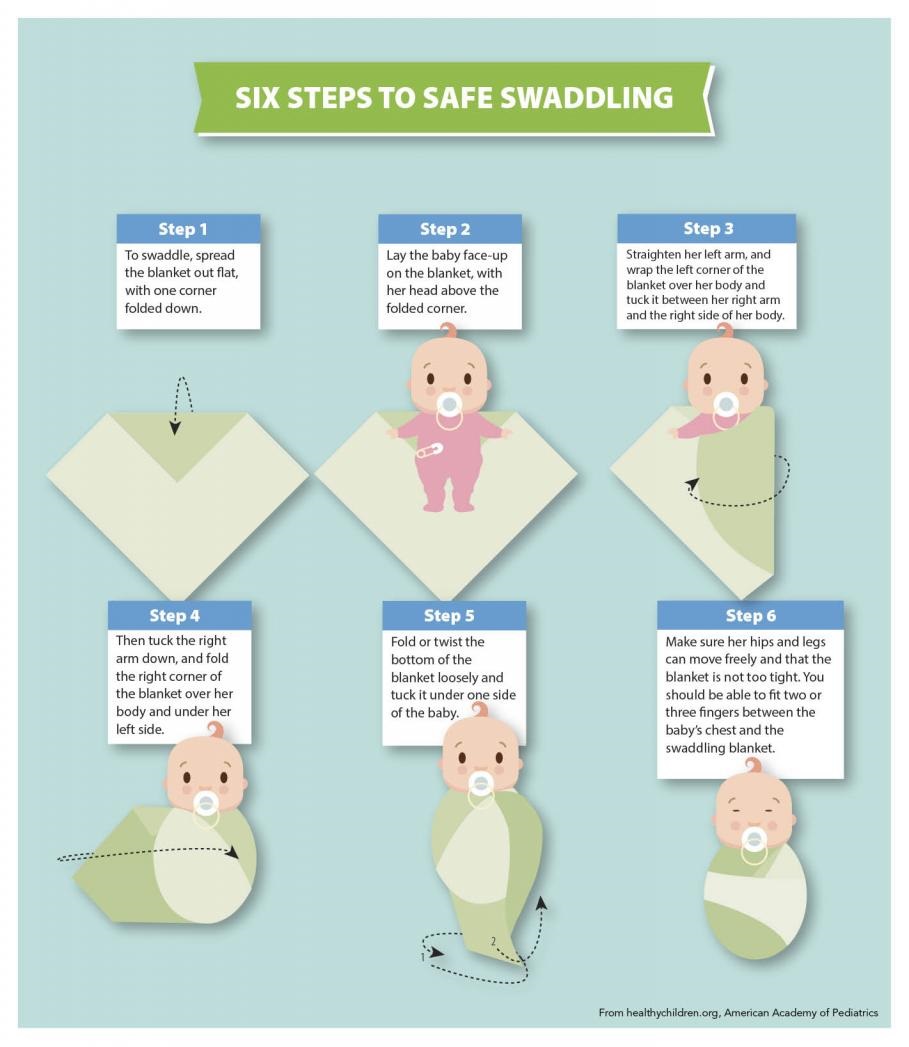FOUR TALKING POINTS ON SAFE SWADDLING
Four Talking Points on Safe Swaddling
In the past few years, media has dramatized research findings on the association between swaddling and sleep-related infant death. Some suggest swaddling increases the risk while others imply it reduces the the risk. Experts from the American Academy of Pediatrics (AAP) say there isn’t enough evidence to formally recommend swaddling, but everyone working with infants and their families should include swaddling in conversations about safe sleep practice.
1) Swaddling should always be combined with the ABCs of Safe Sleep. Sudden unexpected infant death (SUID) associated with swaddling is rare. But the potential risks are lowest when babies are laid to sleep Alone (without other people, blankets, or objects), on their Backs, and in a Crib (or other approved separate sleep surface).
2) Swaddling should end when the infant is about 2 months old. The risks of swaddling outweigh the benefits once a baby learns to roll over. Experts suggest caregivers stop swaddling long before their babies develop this skill. Although it seems hard to believe, babies as young as eight weeks old can use their upper bodies and heads to shift position and roll onto their stomachs even while snugly swaddled.3 Swaddled infants lying face down are at twelve times the risk for SUID as an unswaddled infant in the same position.
3) Swaddling can contribute to overheating, a known risk factor for SIDS. In warmer climates or heated environments, caregivers should reduce the possibility of overheating by dressing the baby in fewer layers and choose a lightweight blanket. Signs of overheating: rapid breathing, heat rash, damp hair, or flushed complexion.
4) Swaddle snugness should be loose enough to fit a few fingers between blanket and baby's chest. A swaddle that is too tight can restrict breathing, but one that is too loose may unravel and put the baby at risk of asphyxiation. Caregivers can avoid this altogether by purchasing swaddle wraps with snaps or Velcro or they can follow the AAP’s six steps to a safe swaddle (infographic courtesy of Allina Health).
RELATED POSTS
While there are are many...
WHAT IS EDUGETHER
Edugether is an all-day English-Spanish home child care with a Spanish immersion education program, focusing on social, cognitive, language, and physical skills development.
HOW CHILDREN LEARN
Touching, squeezing, and exploring are essential for learning. These experiences help children build significant moments in their lives.
BRAIN DEVELOPMENT
A child’s early exposure to language is crucial for development, predicting language skills, cognitive growth, and academic success.


